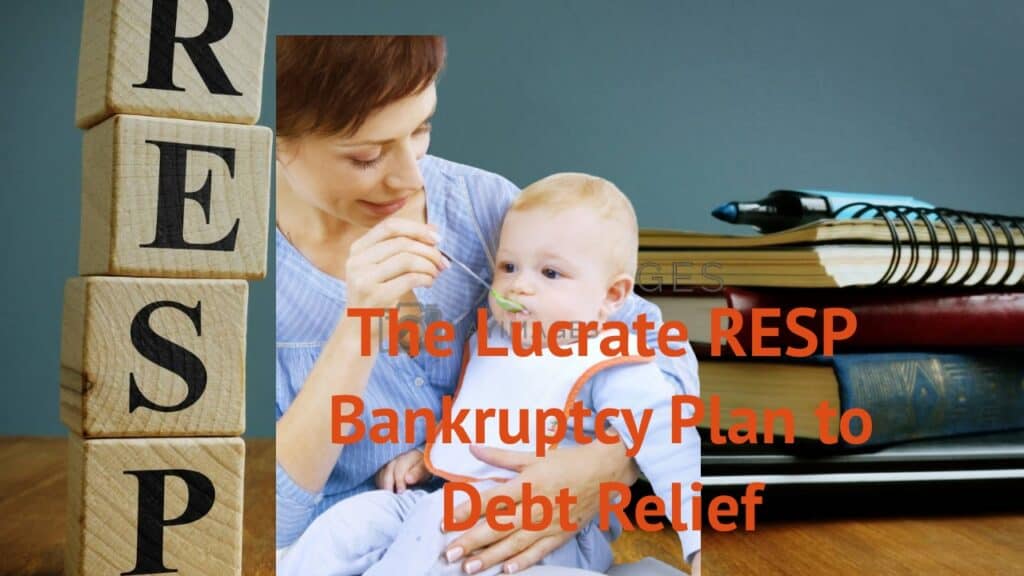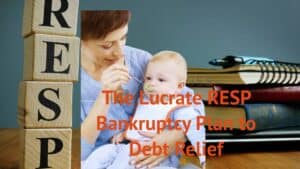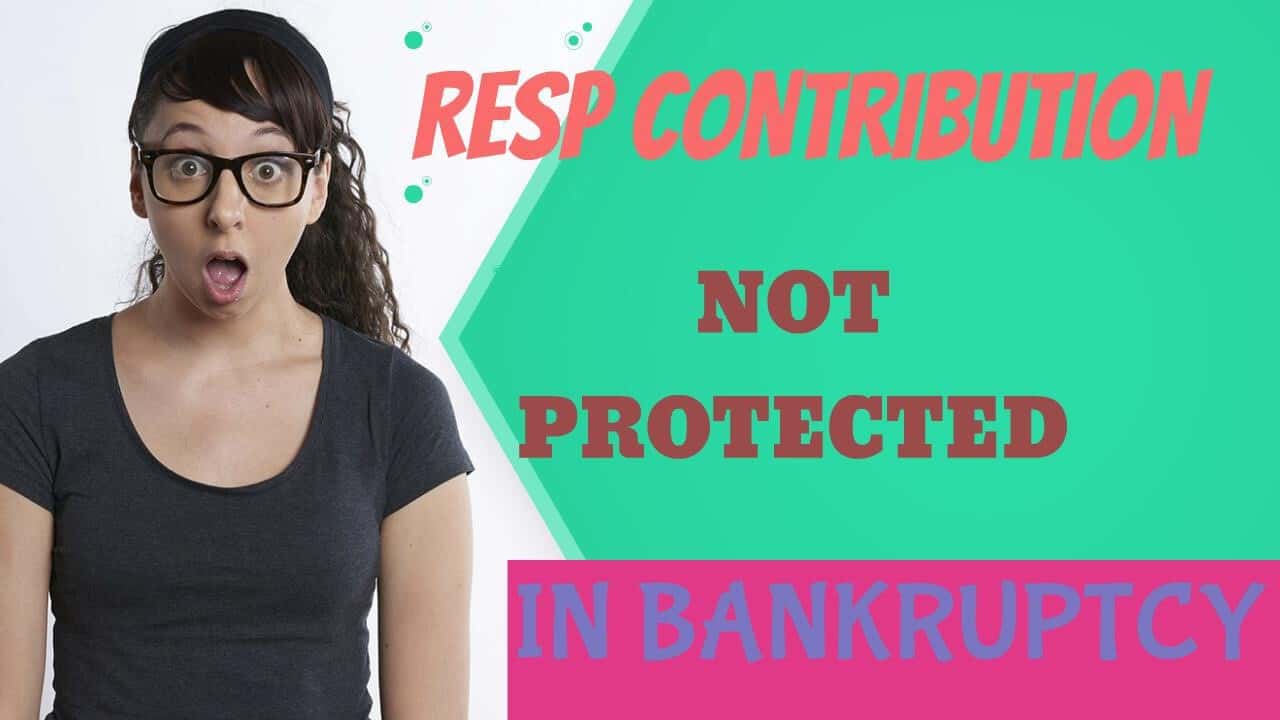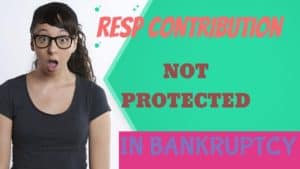
We hope that you and your family are safe, healthy and secure during this COVID-19 pandemic. Ira Smith Trustee & Receiver Inc. is absolutely operational and Ira, in addition to Brandon Smith, is readily available for a telephone consultation or video meeting.
If you would prefer to listen to the audio version of this Brandon Blog, please scroll to the very bottom of the page and click play on the podcast.
RESP bankruptcy introduction
Parents contribute to their child’s Registered Education Savings Plan (RESP) in order to save for their children’s post-secondary education. In contrast to Registered Retirement Savings Plans (RRSPs), RESP contributions, or the total amount of all contributions made by the parent(s), is a property that is available for seizure in bankruptcy of the owner of the RESP.
In this Brandon Blog, I explain why an RRSP, unlike an RESP, is mostly exempt from seizure in bankruptcy. RRSPs and a Registered Retirement Income Fund (RRIF) are exempt from seizure based on a balancing act between federal and provincial laws. The RESP bankruptcy is not exempt. Since I practice in Ontario, I will only comment on the situation there.
Will I lose my RRSP in bankruptcy?
An RRSP’s exemption from seizure in bankruptcy was determined solely by provincial law before 2008. The bankruptcy treatment of RRSPs was not outlined in federal insolvency law. The Bankruptcy and Insolvency Act (Canada) (BIA), being the federal bankruptcy law in Canada, other than the exception described in the next section, exempted assets contained in either an RRSP or an RRIF from seizure as of July 2008.
Inequality among RRSPs was the reason for changing the BIA. If your RRSP was held at a financial institution, it would not be exempt from seizure if you filed for bankruptcy. But if you held it:
- at an insurance company; AND
- the beneficiary designation of your plan was irrevocable as your spouse, child, parent, or grandchild in the event of your death
under the Ontario Insurance Act, the entire RRSP or RRIF was exempt from seizure.
The reason for amending the BIA was twofold:
- all RRSPs and RRIFs should be treated the same, regardless of which institution holds them; and
- retirement income should not be lost as a result of financial problems for Canadians who have gone bankrupt, since their fresh start is made possible by the bankruptcy system.
In other words, before July 2008, people who were going to file for bankruptcy and who had a sizeable RRSP with a chartered bank would transfer the RRSP to an insurance company and designate one or more beneficiaries accordingly. In Canada, bankruptcy courts heard many cases about transactions designed to save an RRSP from seizure in bankruptcy.
An insolvency trustee or bankruptcy trustee could replace the named beneficiary of an insurance policy or retirement investment, including RRSPs or RRIFs, with the Estate and then collapse the plan so as to obtain the funds if the beneficiary designation of the policy was revocable. Trustees cannot collapse investments if the beneficiary is irrevocable; such plans constitute exempt assets. A Trustee would have to use it as one of the reasons for opposing a bankrupt’s discharge. Since the person, aware of their insolvency, transferred the asset for no value, the creditors are unable to pursue them. This was is known as a settlement.
The leading case on this issue, which was eventually followed by other jurisdictions, including Ontario, is Royal Bank of Canada v. North American Life Assurance Co., 1992 CanLII 4696 (SK CA), also known as the Ramgotra case. Dr. Ramgotra was bankrupt. A lower court decision regarding what should be done with the RRSP funds, turned into an RRIF, prior to his bankruptcy but when he knew he was in financial trouble, was appealed by the Royal Bank of Canada, having received Court approval to appeal the case instead of the Trustee appealing. The Court of Appeal found that the property had an irrevocable interest in Mrs. Ramgotra despite the transfer of the RRSP being a settlement.
So effective July 2008, the Canadian government amended the BIA so that regardless of which of the financial institutions an RRSP was held, only the contributions made within 12 months of the date of bankruptcy were subject to being lost to the licensed insolvency trustee in bankruptcy.

Registered Education Savings Plans (RESP) and bankruptcy: RESP bankruptcy is not exempt
It is fairly simple to understand why RESP contribution funds are not exempt from seizure in bankruptcy. Since the parent can collapse the plan before maturity, the child does not receive a property interest in the RESP funds. There is therefore no trust or transfer of property to the child. In an RESP bankruptcy, the bankrupt parent’s Trustee can therefore collapse their RESP.
A Trustee must make satisfactory arrangements with the parent, or another relative, to have them pay the Trustee the equivalent amount of funds in the RESP at the date of bankruptcy. This way the Trustee will have recovered on the asset for the benefit of the bankruptcy estate and the bankrupt’s creditors. The bankrupt parent will have done what is necessary in order to avoid the RESP collapsing, losing the government contributions money and not having the plan value go forward for the child.
MP Dan Albas introduced his private member’s bill, An Act to amend the Bankruptcy and Insolvency Act (property of bankrupt registered education savings plans), on June 3, 2019. In this bill, the purpose was to amend section 67(1)(b.3) of the BIA, so that RESPs receive the same treatment as RRSPs and RRIFs. Like many other private member’s bills that die, this bill has not made any progress.
The thrust is obviously to make sure that other than for contributions made in the 12 months before the date of bankruptcy, a parent should not lose the RESP benefits for their child’s post-secondary school education because of their bankruptcy.
No matter how well-intentioned, one societal reason this Bill C-453 initiative will fail is that an elementary or high school student’s college tuition differs from that of a retiree whose earning years are behind him or her. So to date, there is no federal law that provides creditor protection for a Registered Education Savings Plan.
How to preserve an RESP bankruptcy
Your RESP’s liquidation cash value can be determined by contacting the financial institution holding the funds. The liquidation value does not include the government grant portion of the funds that are only available if the child attends a qualified educational institution.
You can instruct your Trustee to contact the financial institution holding the RESP funds to have the plan cashed out and remit the proceeds (net of government contributions) to the Trustee. This way the asset of the bankruptcy estate will go for the benefit of your creditors if you are not interested in keeping your RESP, which is unlikely in almost every case.
Preserving an RESP bankruptcy can be achieved in two ways. The first is to avoid bankruptcy. No, I don’t mean to tell you not to deal with your financial problems because like it or not, you are in an insolvency scenario. Just don’t use bankruptcy. If your debts not secured by your primary residence are $250,000 or less, you should consider a consumer proposal. You may use the large debtor proposal provisions of the BIA if the debts exceed this amount.
Second, the nonbankrupt spouse, or another relative, can buy the Trustee’s right, title, and interest in the RESP for an amount equal to its liquidation cash value. Thus, the purchaser becomes the owner of the RESP, and the child will continue to benefit from it. In acting in the best interests of unsecured creditors, the Trustee will have recovered the liquidation cash value.

RESP bankruptcy: A very recent divorce example
Having just dealt with this issue last week in one of our personal bankruptcy filings, I am writing about the RESP bankruptcy treatment today. I am the insolvency trustee in a bankruptcy filed by a divorced mother who is now on her own. The failure of her restaurant caused by the COVID-19 pandemic caused her to go bankrupt because of her high debt load.
Her ex-husband and she owned a registered education savings plan for their only child. As part of the no-cost session I provide to anyone contemplating insolvency, I discussed what might happen to an RESP bankruptcy if a bankruptcy is filed.
It was an upsetting experience for the mother. It was clear that she was upset at the prospect of losing half the liquidation proceeds if the plan collapsed. In addition, it was part of the divorce agreement that the jointly owned RESP would be continued for the benefit of the child. We had to create a plan to keep the RESP afloat in the event of RESP bankruptcy. I had no trouble coming up with the plan. What was tricky were the technical details.
This is what we came up with. First, we told her to contact the financial institution where the funds were held and obtain a written statement of the plan’s liquidation cash value. After receiving the written statement from the financial institution, we told her to pass it along to us. She did, and it turned out that the total liquidation value was approximately $26,000. She, therefore, had a half-interest valued at $13,000. We then got her permission to contact her ex-husband and explain the situation.
The ex-husband was informed that his ex-wife would be filing for bankruptcy by us. There would be an RESP bankruptcy. He knew that he had to maintain the RESP. When his ex-wife went bankrupt, we told him that if he purchased our right, title, and interest in the RESP, he would become the sole owner, and the fund would be preserved in an RESP bankruptcy and they could continue contributing to it. It was no problem for him, thankfully.
Because she had actually not yet filed for personal bankruptcy, we had not yet been designated as the licensed insolvency trustee. Our objective was to make sure there wouldn’t be a change of mind despite the divorce condition. Based on Canadian bankruptcy legislation, we scheduled the ex-husband to offer a $13,000 third-party cash guarantee to cover the costs of carrying out the personal bankruptcy.
Furthermore, we agreed that upon the bankruptcy, subject to the approval of the Inspectors, if any were appointed in this summary administration bankruptcy, we would then convert this third-party guarantee into the right, title, and interest as the licensed insolvency trustee of the RESP.
A bill of sale would be issued to him, and we would confirm jointly with the financial institution that he is now the sole owner of the RESP, and they would need to amend their records accordingly. This RESP bankruptcy would have been fully realized as we had gotten the full value of the mother’s half-interest in the RESP. It was a win-win situation for everyone involved.

RESP bankruptcy: What about you?
Hopefully, you see from this Brandon Blog, there are ways to deal with an RRSP both in bankruptcy and non-bankruptcy situations. I hope you found this RESP bankruptcy Brandon Blog informative. Are you in financial distress and a debt crisis? Are you worried about any RRSP or RESP contributions? Do you not have adequate funds to pay your financial obligations as they come due? Are you worried about what will happen to you in retirement? Do you need to find out what your debt relief options and realistic debt relief solutions for your family debt are?
Call the Ira Smith Team today. We have decades and generations of experience assisting people looking for life-changing debt solutions through a debt settlement plan and AVOID the bankruptcy process.
As licensed insolvency professionals, we are the only people accredited, acknowledged and supervised by the federal government to provide insolvency advice and to implement approaches to help you remain out of personal bankruptcy while eliminating your debts. A consumer proposal is a government-approved debt settlement plan to do that. It is an alternative to bankruptcy. We will help you decide on what is best for you between a consumer proposal vs bankruptcy.
Call the Ira Smith Team today so you can eliminate the stress, anxiety, and pain from your life that your financial problems have caused. With the one-of-a-kind roadmap, we develop just for you, we will immediately return you right into a healthy and balanced problem-free life.
You can have a no-cost analysis so we can help you fix your troubles.
Call the Ira Smith Team today. This will allow you to go back to a new healthy and balanced life, Starting Over Starting Now.
We hope that you and your family are safe, healthy and secure during this COVID-19 pandemic. Ira Smith Trustee & Receiver Inc. is absolutely operational and Ira, in addition to Brandon Smith, is readily available for a telephone consultation or video meeting.
resp bankruptcy


